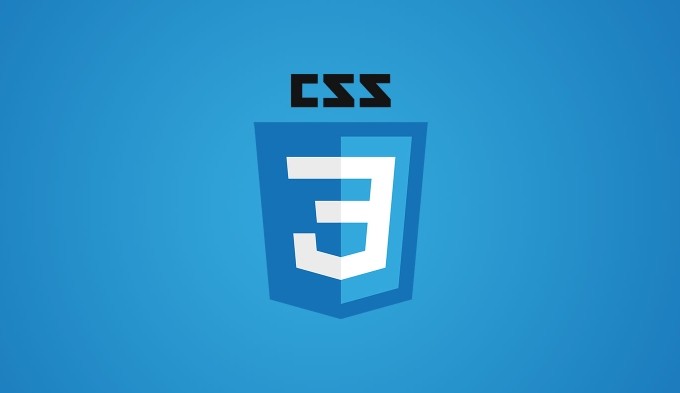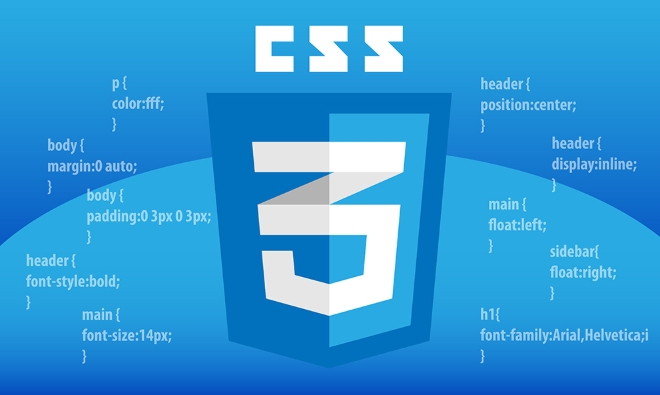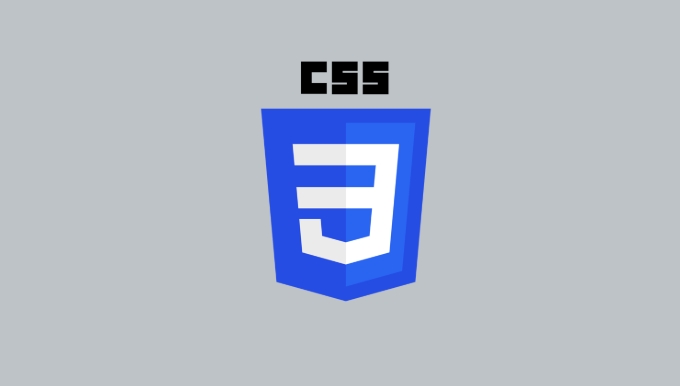The aspect-ratio CSS property enables consistent width-to-height ratios for elements. 1. It allows containers to maintain proportions like 16:9 or 1:1 without JavaScript. 2. In a responsive video example, the container scales smoothly while automatically adjusting height based on width. 3. For image grids, it ensures uniform square or fixed-ratio layouts regardless of screen size. 4. Common uses include videos, image galleries, UI cards, and preventing layout shift by reserving space. 5. Modern browsers support aspect-ratio, but older ones require fallbacks like padding-bottom hacks. 6. Using aspect-ratio simplifies responsive design by eliminating manual padding calculations and ensuring proportional scaling.

The aspect-ratio CSS property lets you define the width-to-height ratio of an element, making it easier to maintain consistent proportions (like 16:9, 4:3, etc.) without relying on JavaScript or complex hacks.

Here’s a practical example:
Basic Example: Responsive 16:9 Video Container
<div class="video-container"> <iframe src="https://www.youtube.com/embed/dQw4w9WgXcQ" title="YouTube video"></iframe> </div>
.video-container {
width: 80%;
max-width: 800px;
aspect-ratio: 16 / 9;
margin: 20px auto;
}
.video-container iframe {
width: 100%;
height: 100%;
border: 0;
}What this does:

- The container will always maintain a 16:9 aspect ratio.
- Height is automatically calculated based on the width.
- When the viewport resizes, the container scales smoothly while keeping proportions.
Another Example: Square Image Grid
<div class="image-box"> <img src="/static/imghw/default1.png" data-src="photo.jpg" class="lazy" alt="Sample photo"> </div>
.image-box {
width: 30%;
aspect-ratio: 1 / 1; /* Square */
border: 2px solid #ccc;
overflow: hidden;
}
.image-box img {
width: 100%;
height: 100%;
object-fit: cover;
}This ensures all images in the grid are perfect squares, regardless of screen size.
Common Use Cases:
- Responsive videos and iframes
- Image galleries with uniform aspect ratios
- Cards or UI components that need fixed proportions
- Avoiding layout shift by reserving space before content loads
Browser Support & Fallback (Optional)
While modern browsers support aspect-ratio, older ones (like pre-Chromium Edge) don’t. A simple fallback:

.fallback-container {
width: 100%;
height: 0;
padding-bottom: 56.25%; /* 16:9 aspect ratio (9 / 16 = 0.5625) */
position: relative;
}
.fallback-container > * {
position: absolute;
top: 0; left: 0; right: 0; bottom: 0;
}But with aspect-ratio, you can skip the padding hack:
.modern-container {
width: 100%;
aspect-ratio: 16 / 9;
}Basically, aspect-ratio simplifies responsive design — no more calculating padding percentages manually. Just set the ratio and let CSS handle the rest.
The above is the detailed content of css aspect-ratio property example. For more information, please follow other related articles on the PHP Chinese website!

Hot AI Tools

Undress AI Tool
Undress images for free

Undresser.AI Undress
AI-powered app for creating realistic nude photos

AI Clothes Remover
Online AI tool for removing clothes from photos.

Clothoff.io
AI clothes remover

Video Face Swap
Swap faces in any video effortlessly with our completely free AI face swap tool!

Hot Article

Hot Tools

Notepad++7.3.1
Easy-to-use and free code editor

SublimeText3 Chinese version
Chinese version, very easy to use

Zend Studio 13.0.1
Powerful PHP integrated development environment

Dreamweaver CS6
Visual web development tools

SublimeText3 Mac version
God-level code editing software (SublimeText3)
 What are common CSS browser inconsistencies?
Jul 26, 2025 am 07:04 AM
What are common CSS browser inconsistencies?
Jul 26, 2025 am 07:04 AM
Different browsers have differences in CSS parsing, resulting in inconsistent display effects, mainly including the default style difference, box model calculation method, Flexbox and Grid layout support level, and inconsistent behavior of certain CSS attributes. 1. The default style processing is inconsistent. The solution is to use CSSReset or Normalize.css to unify the initial style; 2. The box model calculation method of the old version of IE is different. It is recommended to use box-sizing:border-box in a unified manner; 3. Flexbox and Grid perform differently in edge cases or in old versions. More tests and use Autoprefixer; 4. Some CSS attribute behaviors are inconsistent. CanIuse must be consulted and downgraded.
 Describe the `vertical-align` property and its typical use cases
Jul 26, 2025 am 07:35 AM
Describe the `vertical-align` property and its typical use cases
Jul 26, 2025 am 07:35 AM
Thevertical-alignpropertyinCSSalignsinlineortable-cellelementsvertically.1.Itadjustselementslikeimagesorforminputswithintextlinesusingvalueslikebaseline,middle,super,andsub.2.Intablecells,itcontrolscontentalignmentwithtop,middle,orbottomvalues,oftenu
 What is the accent-color property?
Jul 26, 2025 am 09:25 AM
What is the accent-color property?
Jul 26, 2025 am 09:25 AM
accent-color is an attribute used in CSS to customize the highlight colors of form elements such as checkboxes, radio buttons and sliders; 1. It directly changes the default color of the selected state of the form control, such as changing the blue check mark of the checkbox to red; 2. Supported elements include input boxes of type="checkbox", type="radio" and type="range"; 3. Using accent-color can avoid complex custom styles and extra DOM structures, and maintain native accessibility; 4. It is generally supported by modern browsers, and old browsers need to be downgraded; 5. Set accent-col
 How to compile SCSS to CSS?
Jul 27, 2025 am 01:58 AM
How to compile SCSS to CSS?
Jul 27, 2025 am 01:58 AM
InstallDartSassvianpmafterinstallingNode.jsusingnpminstall-gsass.2.CompileSCSStoCSSusingthecommandsassinput.scssoutput.css.3.Usesass--watchinput.scssoutput.csstoauto-compileonsave.4.Watchentirefolderswithsass--watchscss:css.5.Usepartialswith_prefixfo
 How to change text color in CSS?
Jul 27, 2025 am 04:25 AM
How to change text color in CSS?
Jul 27, 2025 am 04:25 AM
To change the text color in CSS, you need to use the color attribute; 1. Use the color attribute to set the text foreground color, supporting color names (such as red), hexadecimal codes (such as #ff0000), RGB values (such as rgb(255,0,0)), HSL values (such as hsl(0,100%,50%)), and RGBA or HSLA with transparency (such as rgba(255,0,0,0.5)); 2. You can apply colors to any element containing text, such as h1 to h6 titles, paragraph p, link a (note the color settings of different states of a:link, a:visited, a:hover, a:active), buttons, div, span, etc.; 3. Most
 CSS transitions tutorial
Jul 26, 2025 am 09:30 AM
CSS transitions tutorial
Jul 26, 2025 am 09:30 AM
CSStransitionsenablesmoothpropertychangeswithminimalcode,idealforhovereffectsandinteractivefeedback.1.Usethesyntaxtransition:propertydurationtiming-functiondelay;todefinetransitions,liketransition:background-color0.3sease0.1s;.2.Specifytransition-pro
 How to purge unused CSS?
Jul 27, 2025 am 02:47 AM
How to purge unused CSS?
Jul 27, 2025 am 02:47 AM
UseautomatedtoolslikePurgeCSSorUnCSStoscanandremoveunusedCSS;2.IntegratepurgingintoyourbuildprocessviaWebpack,Vite,orTailwind’scontentconfiguration;3.AuditCSSusagewithChromeDevToolsCoveragetabbeforepurgingtoavoidremovingneededstyles;4.Safelistdynamic
 HTML `style` Tag: Inline vs. Internal CSS
Jul 26, 2025 am 07:23 AM
HTML `style` Tag: Inline vs. Internal CSS
Jul 26, 2025 am 07:23 AM
The style placement method needs to be selected according to the scene. 1. Inline is suitable for temporary modification of single elements or dynamic JS control, such as the button color changes with operation; 2. Internal CSS is suitable for projects with few pages and simple structure, which is convenient for centralized management of styles, such as basic style settings of login pages; 3. Priority is given to reuse, maintenance and performance, and it is better to split external link CSS files for large projects.






